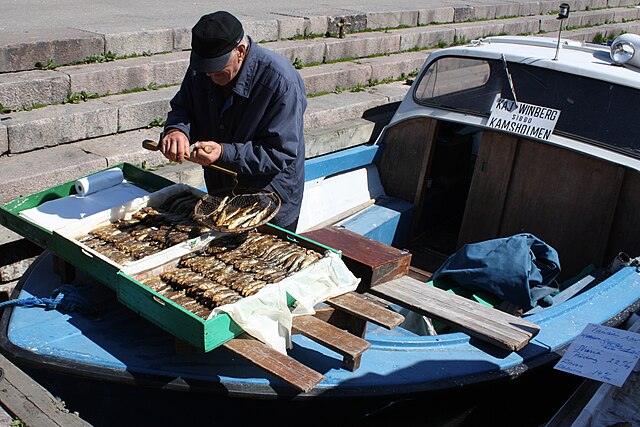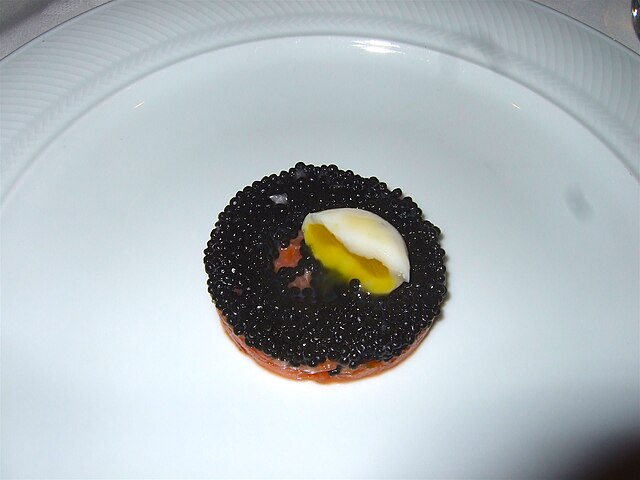Herring are forage fish in the wild, mostly belonging to the family Clupeidae. They are an important food for humans. Herring often move in large schools around fishing banks and near the coast. The most abundant and commercially important species belong to the genus Clupea, found particularly in shallow, temperate waters of the North Pacific and North Atlantic Oceans, including the Baltic Sea, as well as off the west coast of South America. Three species of Clupea are recognized; the main taxon, the Atlantic herring, accounts for over half the world's commercial capture of herrings.
Herring as food
Dutch herring stall
Fisherman selling smoked herring
Image: Avruga caviar
Smoked fish is fish that has been cured by smoking. Foods have been smoked by humans throughout history. Originally this was done as a preservative. In more recent times fish is readily preserved by refrigeration and freezing and the smoking of fish is generally done for the unique taste and flavour imparted by the smoking process.
Racks of haddock in a homemade smoker. Smouldering at the bottom are hardwood wood chips. The sacking at the back is used to cover the racks while they are smoked.
Medieval smokehouse, ca. 1465, at the archaeological site of Walraversijde, a fishing village on the coast of Belgium
A smoked Atlantic mackerel
Smoked fish in smoker








